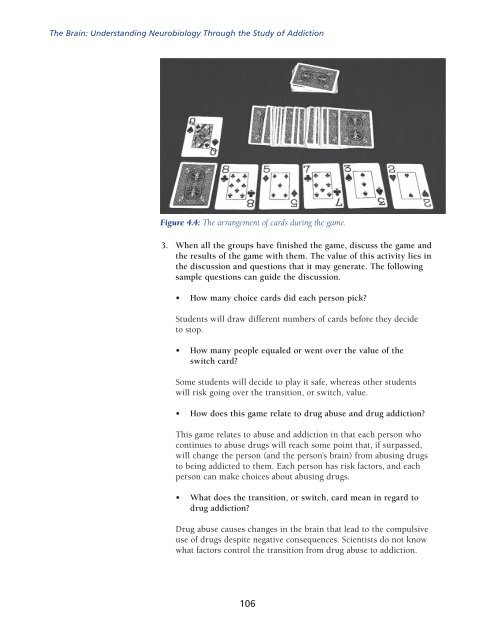Drug Abuse And Addiction - NIH Office of Science Education
Drug Abuse And Addiction - NIH Office of Science Education
Drug Abuse And Addiction - NIH Office of Science Education
Create successful ePaper yourself
Turn your PDF publications into a flip-book with our unique Google optimized e-Paper software.
The Brain: Understanding Neurobiology Through the Study <strong>of</strong> <strong>Addiction</strong>Figure 4.4: The arrangement <strong>of</strong> cards during the game.3. When all the groups have finished the game, discuss the game andthe results <strong>of</strong> the game with them. The value <strong>of</strong> this activity lies inthe dis cussion and questions that it may generate. The followingsample ques tions can guide the discussion.• How many choice cards did each person pick?Students will draw different numbers <strong>of</strong> cards before they decideto stop.• How many people equaled or went over the value <strong>of</strong> theswitch card?Some students will decide to play it safe, whereas other studentswill risk going over the transition, or switch, value.• How does this game relate to drug abuse and drug addiction?This game relates to abuse and addiction in that each person whocontinues to abuse drugs will reach some point that, if surpassed,will change the per son (and the person’s brain) from abusing drugsto being addicted to them. Each per son has risk factors, and eachperson can make choices about abusing drugs.• What does the transition, or switch, card mean in regard todrug addiction?<strong>Drug</strong> abuse causes changes in the brain that lead to the compulsiveuse <strong>of</strong> drugs despite negative consequences. Scientists do not knowwhat factors control the transition from drug abuse to addiction.106
















